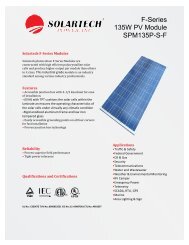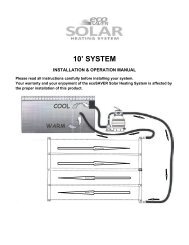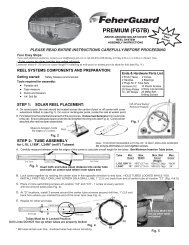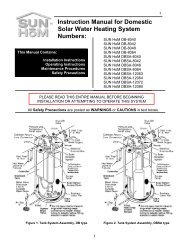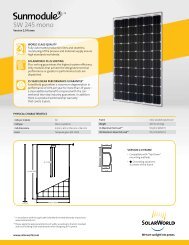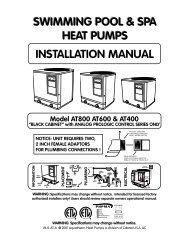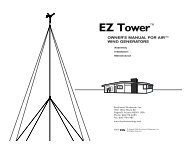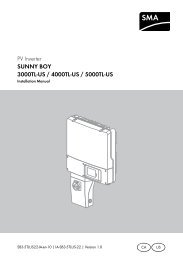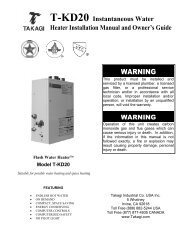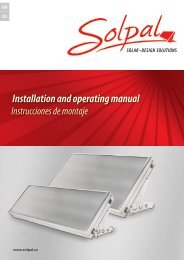Operations Manual - PV Powered
Operations Manual - PV Powered
Operations Manual - PV Powered
You also want an ePaper? Increase the reach of your titles
YUMPU automatically turns print PDFs into web optimized ePapers that Google loves.
Grid-tied Residential Inverters<br />
Installation and Operation <strong>Manual</strong><br />
!<br />
WARNING<br />
Electrical connections must be completed in accordance with local electrical<br />
codes and the National Electrical Code (NEC), ANSI/NFPA 70. Use 12 AWG<br />
minimum, 90°C copper wire for all inverter electrical connections. Voltage<br />
drop as well as other considerations may dictate using larger wire sizes.<br />
NOTE: To avoid an increase in AC voltage level, which may lead to nuisance faults, <strong>PV</strong><br />
<strong>Powered</strong> recommends sizing the conductor for a drop of less than 2%.<br />
!<br />
!<br />
WARNING<br />
Ensure the breaker in the main utility service panel is switched OFF before<br />
wiring the inverter. This breaker should be switched ON only after all wiring<br />
has been completed as described in this manual.<br />
WARNING<br />
Follow the order listed below to wire the inverter. Failure to do so may result<br />
in hazardous voltages or disconnection of contacts.<br />
IMPORTANT: When mounting the inverter outside, use rain-tight or wet-location conduit<br />
hubs that comply with the requirements in the Standard for Fittings for Conduit and Outlet<br />
Boxes, UL 514B.<br />
NOTE: Terminal connections for the inverter are located inside the inverter on the circuit<br />
board at the bottom of the cabinet. The AC and DC terminals accept wires up to<br />
6 AWG.<br />
!<br />
CAUTION<br />
The DC/AC input and output circuits are isolated from the enclosure. The <strong>PV</strong><br />
equipment grounding conductor (EGC), where required by Sections 690-41,<br />
690-42, and 690-43 of the National Electric Code (NEC), ANSI/NFPA 70,<br />
is the responsibility of the installer. Failure to properly install the ground<br />
conductor for the <strong>PV</strong> equipment can result in exposed metallic surfaces<br />
becoming energized to the full potential of the <strong>PV</strong> array.<br />
GFI Fuse External<br />
Access Port<br />
Drainage Port<br />
Figure 3-5 Communications, AC and DC Ports<br />
9



